Ever heard about “things that go bump in the night?”
Well, if you’ve got an older car, truck, or SUV with a more than few thousand miles on it, you may be hearing “things that go bump in your suspension.”
And “bump” is being generous here; while you’re driving along, you could be hearing clunks, bangs, thuds, groans, and all sorts of other unpleasant melodies—and they’re often accompanied by an assortment of shimmies, shakes, and vibrations too.
Guess what? That’s your vehicle’s way of telling you that something is wrong with your steering, or front chassis and suspension.
The good news is, there are ways to figure out what those signals mean. And more importantly, you might find that fixing those suspension and steering problems aren’t all that tough (or expensive). Follow along and we’ll show you how.
Diagnosing Steering & Suspension Issues
The thing about steering and suspension is that components wear slowly over time. You may not notice your vehicle’s handling, braking, or ride quality has degraded until you hear a noise or feel a shimmy. When you do, it’s a clear warning sign that a part might be about to call it quits.
And nothing is more maddening than trying to figure out what’s causing that noise, shimmy, or wobble. We came across this video from Eric the Car Guy and it’s a great lesson on how to pinpoint such noises on a front-wheel drive vehicle.
But prevention is a big part of the battle here too. It’s a good idea to inspect your vehicle’s suspension during routine service like oil changes or tire rotations. Take a good look around your vehicle’s wheel well and pay attention to the chassis components.
For instance, many OE manufacturers like to use rubber bushings in their suspension assemblies. While rubber does a really good job at mitigating noise, vibration, and harshness, after a few years it becomes brittle and will begin to deteriorate—making it a common culprit behind a lot of suspension issues.
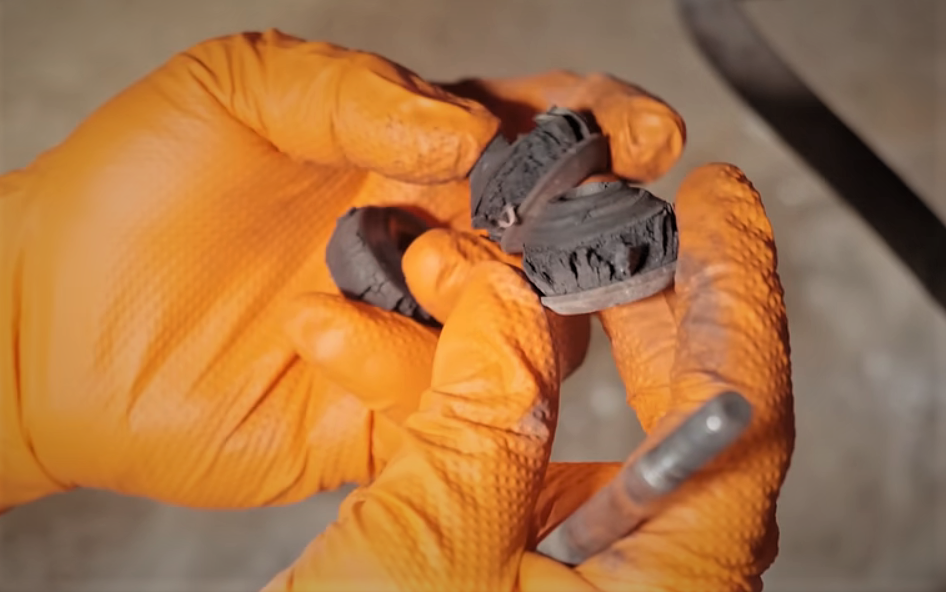
You should also check for weird, unusual marks, like worn away paint on a suspension part or tire rub marks on a fender liner. Speaking of tires, odd, uneven wear is often a dead giveaway for a suspension issue too. Click here for our handy tire wear infographic guide to help you sort all that out.
Fluid leaks can also be a potential indicator of a worn-out suspension part. Grease may escape a worn bushing or joint, and a shock or strut body may weep fluid with age.
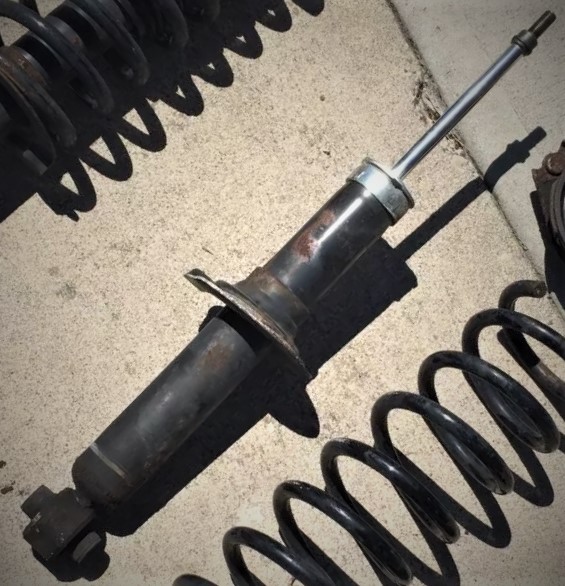
Once you’ve figured out what needs replacing, a quick trip to your favorite automotive replacement parts resource can help you find the best OE replacement suspension parts.
Some Popular OE-Quality Suspension Replacement Brands
Moog
Moog has been making steering and suspension parts for over 100 years. Since racing quickly uncovers the weak points of a part, Moog draws on the expertise of NASCAR crew chiefs and engineers when designing suspension and steering parts. If a part can survive hundreds of laps at 180+ MPH, it can survive the roads you drive on every day.
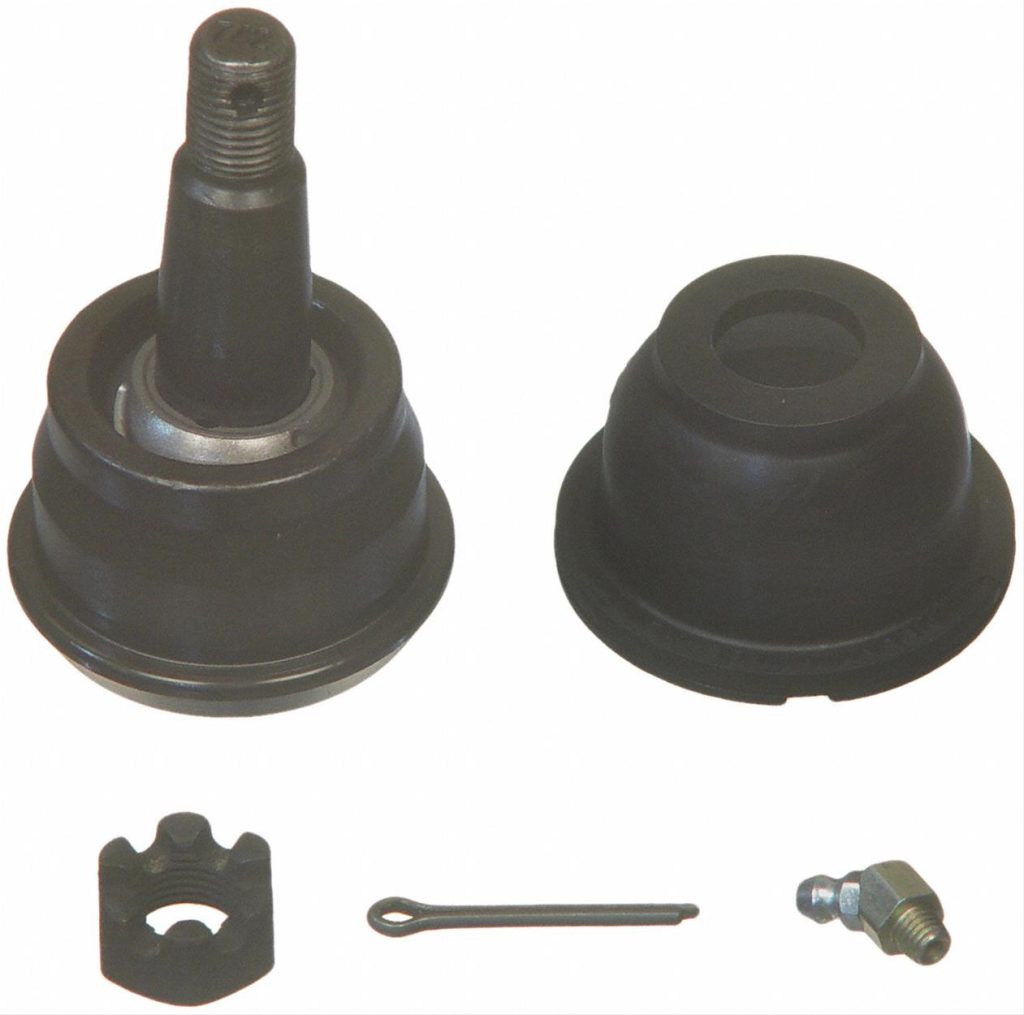
Moog offers a massive selection of suspension components for many vehicles, from late model trucks to classic cars. Here are some that you might want to check out:
- Ball joints that are greaseable for long service life
- All-metal tie rod ends that won’t break like OEM-style ends with plastic bushings
- Control arms with pre-installed or integral ball joints
- Sway bar links with pre-installed boot and wrench flats for easy installation
- Wheel bearing and hub assemblies with quad-lip seal design for maximum protection from contamination
- U-joints with forged and case-hardened alloy steel crosses plus heat-treated needle bearings
- Cargo Control variable-rate coil springs that maintain ride height for vehicles that carry heavy loads
You might want to explore Moog’s Problem Solver line too. They are often better-than-new replacement parts that remedy potential issues with the original factory part.
For instance, Problem Solver ball joints, tie rod ends, and control arms have advanced features like all-metal ‘gusher’ bearings that force lube over all wear surfaces; full ball metal studs for smooth rotational movement and more responsive steering; and pressed-in cover plates that promote longer service life versus traditional cover plate designs.
Mevotech
Mevotech also makes top-quality suspension parts. The Canadian-based company engineers all of its products—no reboxed parts made by someone else. Here’s a sample of what Mevotech offers.
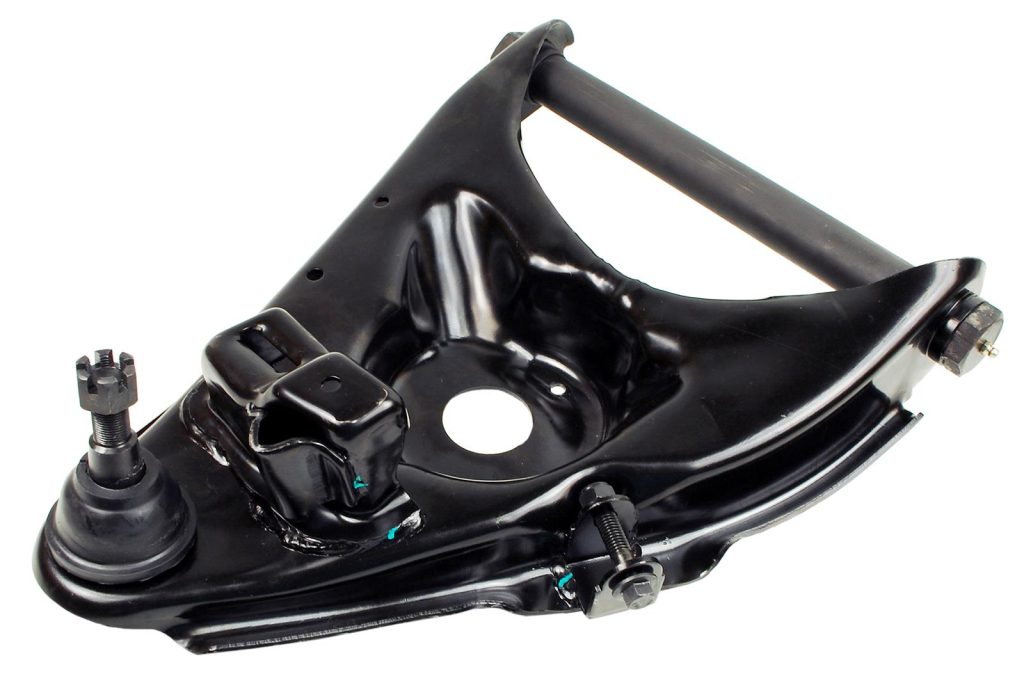
Mevotech Supreme products are designed to exceed OEM specification with features like special grease channels for smoother rotation, improved grease flow, and longer service life. Supreme parts are covered by a limited lifetime warranty.
Mevotech TTX control arms, tie rod ends, and sway bar links are designed for heavy-duty use and extended service intervals. Features include thicker castings, sintered metal bearings, and Repel-Tek corrosion-resistant coating. TTX parts also have a limited lifetime warranty.
If you can’t find the right parts from either Moog or Mevotech, like rack and pinion steering assemblies, or air suspension components, both Dorman and ACDelco are highly respected brands with a massive catalog of parts for an even massive-er range of vehicles—all of their direct replacement parts meet or exceed OEM specifications.
Saving Time with Loaded Strut Assemblies
As you search for the best replacement suspension parts for your car, truck, or SUV, there’s a good chance you’ll come across a term called “Loaded” strut assemblies. Truth is, we’re big fans of loaded strut assemblies—so much so, that we wrote an entire article about them and you can check it out here:
But for brevity’s sake, a strut suspension is the most common type you’ll find in cars built in the last 30 years. And in the suspension world, loaded strut assemblies are the greatest thing since sliced bread. Here’s why:
To replace a worn strut, you have to remove the entire assembly from the vehicle, disassemble it to replace the strut, then reassemble it to install—which can be quite cumbersome for the DIY’er.
Loaded struts, on the other hand, come preassembled. You just remove the old one and bolt in the new one. You don’t have to get new strut mounts and bumpers, either, loaded struts already have them.
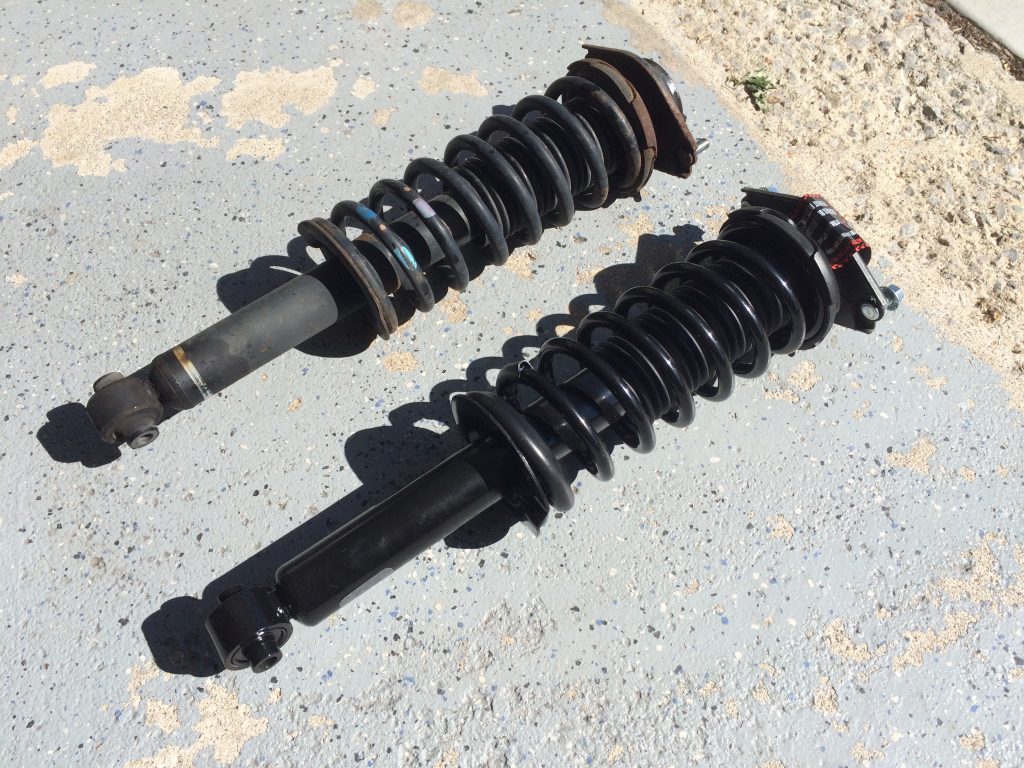
Long story short, loaded struts can save you some time and money, so if you’re interested, here are some companies that make ’em.
In fact, even our pals at Summit Racing have their own lineup of strut assemblies that will restore your handling and ride quality.
Some Tools You May Need to Fix Your Vehicle’s Suspension
It probably won’t be a surprise to you that suspension work often requires some specialized tools. Perhaps the most important one to keep in your arsenal is a Ball Joint Press.
Ball joint service kits make removing and installing press-fit ball joints (especially rusty, corroded ones) much easier. Some of our favorite ones are from K-Tool and Astro Pneumatic, but there are plenty of other solid choices out there.
Our recommendation is to pick a ball joint service kit that includes a C-frame press/clamp and a set of adapters that’ll accommodate the type of car, truck, or SUV you’re working on. (In our experience, 4x4s often require a specialized set of adapters too, so make sure and check before ordering the best ball joint kit to suit your needs.)
While they’re obviously good at ball joints, these tools are also really handy for removing U-joints and other press-fit parts—and there are plenty of other uses for a ball joint press too.
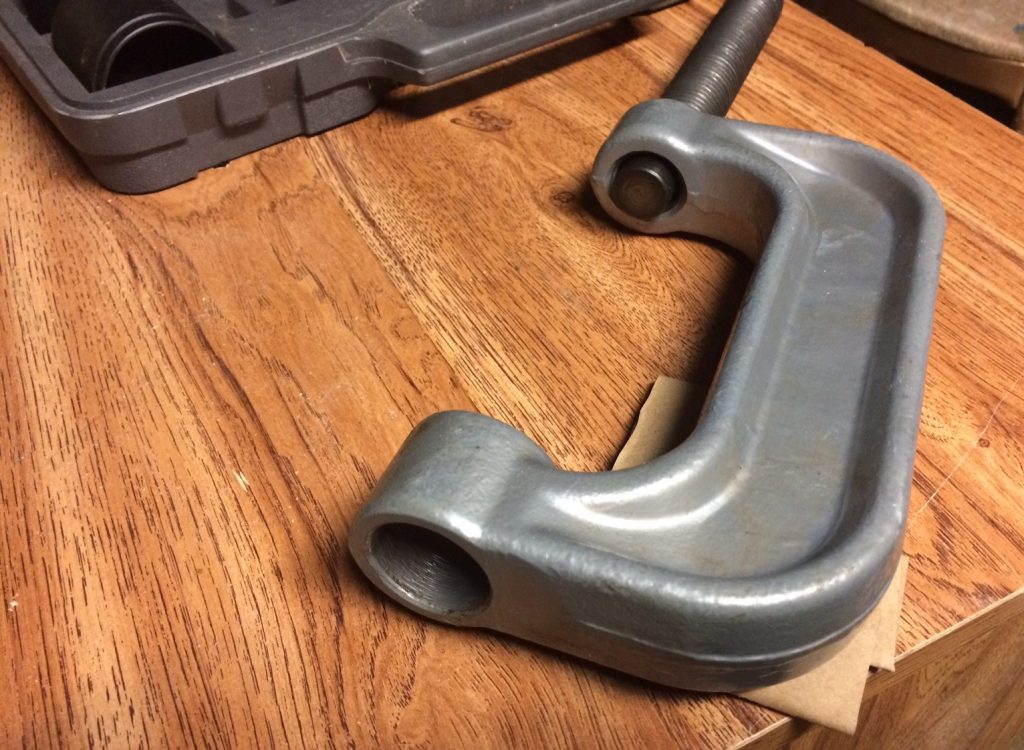
Here are some other handy tools to have around:
- Tie rod removal tools
- Pry bars
- Jack stand/bottle jack units (every gearhead should have a couple!)
- Rust penetrating spray
- Coil spring compressor tools
Helpful Suspension Repair Articles, How-Tos & Advice
The world of suspension repair is a big one, so we didn’t have the space to cover everything you need to know in just a single article. But no worries, we’ve collected some links to our most popular suspension and chassis stories, and you can check them out below:
- How to Use a Ball Joint Press
- Tire Treadwear Inspection Tips
- Guide to Diagnosing Steering Issues
- How to Use Coil Spring Compressor Tools
- Are You Driving on Blown Shocks?
- Pick the Best Bushings for Your Vehicle
- Shock/Strut Installation Tips
- How to Diagnose Worn Shocks & Struts
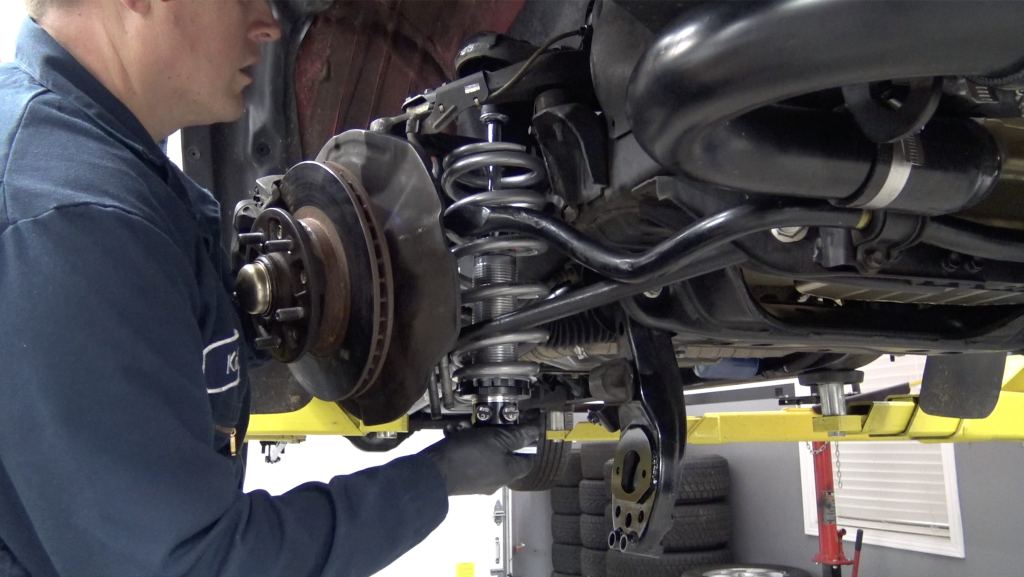

Comments